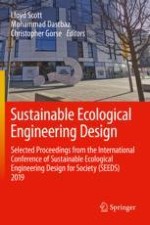2020 | OriginalPaper | Buchkapitel
Are Construction Professionals Equipped with the Knowledge and Tools to Address the Sustainability Dilemma?
verfasst von : Paul Mundy, Colin A. Booth
Erschienen in: Sustainable Ecological Engineering Design
Aktivieren Sie unsere intelligente Suche, um passende Fachinhalte oder Patente zu finden.
Wählen Sie Textabschnitte aus um mit Künstlicher Intelligenz passenden Patente zu finden. powered by
Markieren Sie Textabschnitte, um KI-gestützt weitere passende Inhalte zu finden. powered by
